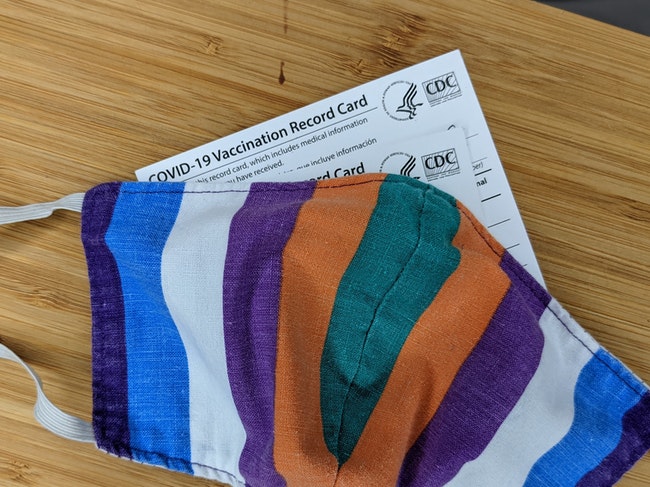 File photo: Chas Hundley
File photo: Chas Hundley
A Friday, June 4 press conference by Oregon Governor Kate Brown saw state officials outline the numbers and steps needed to lift COVID-19 restrictions put in place to stem the ongoing coronavirus pandemic.
The big goal, 70% of those aged 18 and older with at least one shot, is in sight. Once reached, Brown said, the state will shift tactics in fighting the coronavirus.
Most state restrictions will be removed, and the state will move resources to aiding local health agencies and to recovery efforts.
“I want to be very clear that we are able to reopen like this because of the efficacy of the vaccines. For those of you who are vaccinated, you’ve helped us reach this point — and you are protected from this virus,” said Brown. “However, there are still Oregonians who need to take extra precautions to feel and stay safe. People battling cancer and immunocompromised Oregonians, to name a couple. There are also many Oregon kids who are not yet eligible for a vaccine.”
The Pfizer vaccine has been approved for emergency use in those ages 12 and up. The Johnson & Johnson and the Moderna vaccines remain approved only for adults ages 18 and up.
As of June 7, 66.8% of the state’s population ages 18 and up have received at least one dose of a COVID-19 vaccine, according to the OHA. Oregon’s adult population in 2020 — the population estimates compiled by Portland State University researchers the OHA is using to determine the percentages of those vaccinated — was estimated to be at 3,403,051, leaving almost 109,000 adults still needing their first dose before the state hits the governor’s — and President Joe Biden’s — goal of 70%.
Medical providers providing vaccines must enter data into the tracking system the state uses within 72 hours of administering a vaccine.
To date, the Oregon Health Authority says that Oregon’s COVID-19 death toll is 2,694 people. Countless more have been sickened, some who continue to experience adverse health effects. Finances of families, the jobs market, and businesses have experienced enormous pressures. Some businesses have closed, either temporarily, or forever in some cases, as a direct result of the pandemic and the associated restrictions enacted to reduce the spread of the virus. Education for youth across the world was disrupted as schools shuttered abruptly in 2020 and returned in a digital format that presented profound difficulties to staff and students alike.
A so-called return to “normal” is impossible, with the globe forever altered by the worst pandemic to strike in more than a century. But a return to what will be the closest thing could arrive soon, at least as far as government restrictions on businesses and gatherings are concerned.
“This has really become a tale of two pandemics,” Brown said during the press conference on June 4. “If you are vaccinated, then you’re safe, you can carry on safely without wearing a mask and social distancing. If you are not vaccinated, this virus still poses a very real threat,” the governor said.
Through May 31, 1,009 breakthrough cases — COVID-19 cases that occur in those considered fully vaccinated — were identified by the Oregon Health Authority, a tiny fraction of cases in the state.
“In May, there were 16,097 cases of COVID-19 and 98 percent of these cases were among people who were unvaccinated,” the Oregon Health Authority said in a statement.
Once the 70% goal is reached, the state expects the following to happen.
The County Risk Level Framework, Oregon’s system of county-based metrics, tiered in four levels from “Lower” to “Extreme” (Washington County remains at “Lower Risk”) will be removed, lifting capacity restrictions on restaurants, gyms, grocery stores, churches, social gatherings, and more. Social distancing and mask requirements will go away in most situations, except in airports, public transit, and health care settings such as nursing homes.
What the state called “vaccine verification,” an unpopular system among most business operators that saw some businesses obligated to ask their customers for proof of vaccination if they did not wish to wear a mask, will cease to exist.
In large part, the system has not taken off. Businesses for the most part maintain mask requirements for all, or simply don’t check for proof of vaccination or enforce mask-wearing among their patrons.
Those who are not vaccinated, either due to choice or because they cannot due to medical reasons, or those who are especially vulnerable to the effects of COVID-19, will be strongly recommended to wear masks.
Because those under age 12 are not eligible for a vaccine, some restrictions and safety measures will remain in place in schools and childcare facilities.
The state will continue to play a role in setting rules and guidelines for local school districts in handling disease prevention measures, but schools will return to full-time instruction in the fall, according to the governor’s office.
The OHA will continue their monitoring of the global pandemic and aid other health jurisdictions throughout the state, but their role will continue to lessen and transition to a system that is already in place for other diseases that have a perpetual existence in society, such as SARS and Ebola, the state said.
To find out more information on becoming vaccinated, visit covidvaccine.oregon.gov or dial 211. Washington County residents can also find more local information on getting vaccinated on the Washington County Health and Human Services website.

Chas Hundley is the editor of the Banks Post and sister news publications the Gales Creek Journal and the Salmonberry Magazine. He grew up in Gales Creek and has a cat.




